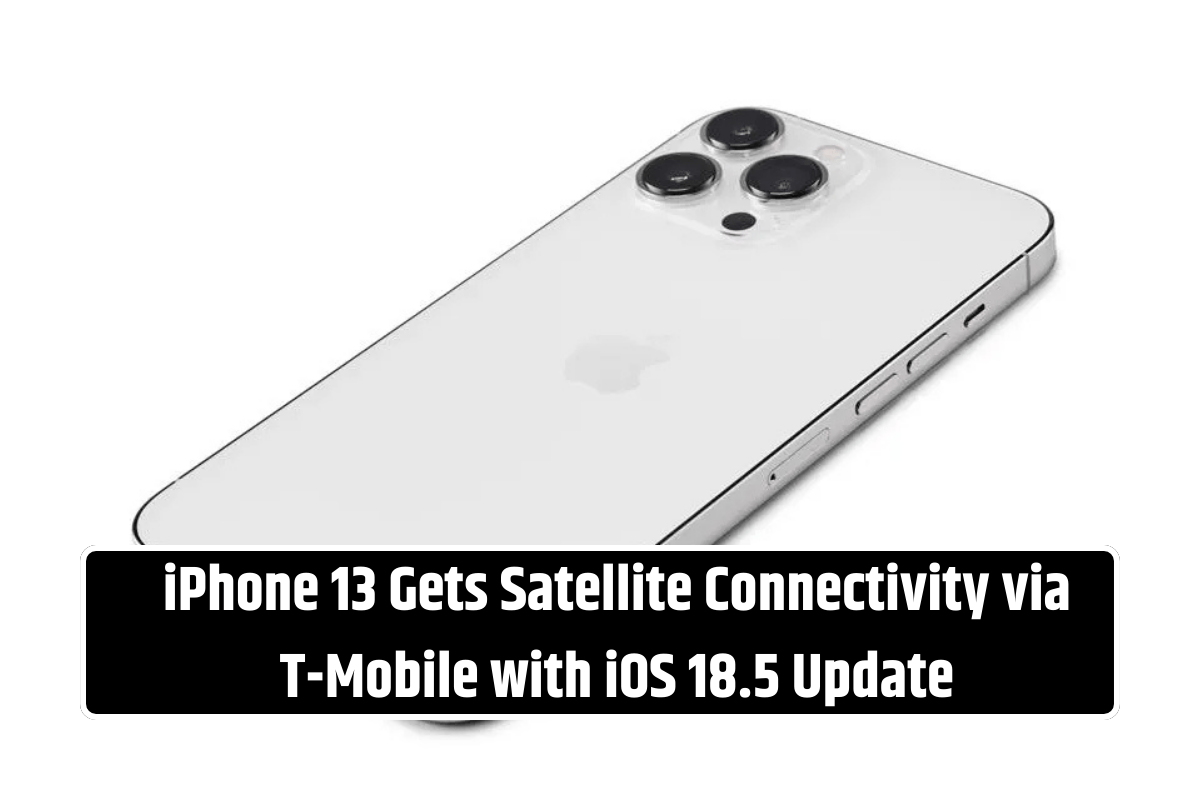When Apple launched the iPhone 14 in 2022, it introduced a special feature that could save lives—Emergency SOS via satellite. This helped people send emergency messages even when there was no mobile signal. Now, something similar is coming to the iPhone 13 series, thanks to a free iOS update. This update brings satellite support through mobile carriers, starting with T-Mobile in the U.S.
What Has Changed for iPhone 13 Users?
With the new iOS 18.5 update, released on May 12, 2025, iPhone 13, iPhone 13 Pro, and iPhone 13 Pro Max users can now connect to satellite networks in emergency situations. But this version is different from what iPhone 14 and newer models offer.
The iPhone 14 has built-in hardware that lets users point their phone at the sky and connect directly to a satellite. This allows them to send emergency messages or request roadside help when they’re out of signal range. The iPhone 13 does not have this hardware. So how does it work?
How Does the New Satellite Feature Work?
The new service uses carrier-supported satellite connectivity. This means T-Mobile acts as the middleman. When your iPhone 13 loses cellular signal, it connects through T-Mobile’s network, which then connects to satellites operated by SpaceX’s Starlink.
Unlike the iPhone 14, you don’t have to take the phone out and point it toward the sky. The satellite connection happens in the background through the carrier. You can even keep the phone in your pocket and still send messages.
Only Available in the U.S. for Now
Currently, this feature is only available in the United States and works only on T-Mobile during its trial period, which ends in July 2025. Other networks like Verizon and AT&T are also working with AST SpaceMobile, a Texas-based company, to allow more advanced features like video calling via satellite in the future.
No, Your iPhone Doesn’t Have Starlink
Some people thought the new update meant Starlink was installed directly on iPhones. That’s not true. The iPhone doesn’t connect directly to Starlink satellites; it still uses T-Mobile’s network to access the satellite connection. The Starlink system is only used by the carrier, not by the phone itself.
Apple’s Emergency SOS vs. T-Mobile’s Satellite Service
Apple uses Globalstar for its Emergency SOS feature, while T-Mobile’s version uses Starlink. Earlier, this service was only available for Samsung users, but now iPhone 13 users can also benefit from it.
Future Plans
T-Mobile says this feature will be available for more smartphones in the future, not just iPhones. However, phones will likely need a software update to use it.
This feature is already being seen as a game-changer, as satellite communication has helped save lives—from finding lost hikers to helping people escape from wildfires. Adding this to older phones like the iPhone 13 makes it even more powerful and valuable in emergencies.
The iOS 18.5 update has given the iPhone 13 series a big boost by adding carrier-supported satellite connectivity, starting with T-Mobile in the U.S. While the phone doesn’t have the same satellite hardware as the iPhone 14 and later, this new feature still allows emergency messaging without signal. The feature uses Starlink satellites and is currently in a free trial. With more carriers planning similar services, satellite messaging might become common on many phones in the near future.











